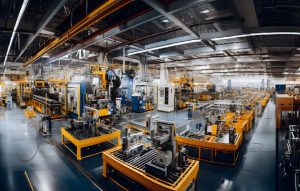Do you know that tanners, coopers, cobblers and millers in the 17th century would know that by the time they reach 40-50 years of age, they would be either crippled or dead? They used to be under constant risk through exposure to harmful gases and radiation at their workplace. Moreover, the lack of any suitable solution led them to be dependent on their sense of smell to detect toxic gases.
The Bhopal gas disaster that released at least 30 tons of a highly toxic gas called methyl isocyanate affected thousands of human lives and the Aliso Canyon gas leak in California, which is considered to be the worst man-made greenhouse-gas disaster in the U.S., are other living examples of how harmful gas leakage incidents could be.
Even after so many years, do you feel that the situation has really changed? Although the technology has upgraded in these years, but not much has been done to provide a healthy working environment. Still, industries like mining, petrochemicals, metal refining, Oil & Gas, recyclable, fertilizers, refractories are considered dangerous and accidents due to gas leakages are common there. In the past few years, there are efforts being taken to monitor and improve the outdoor air pollution, but little has been done regarding indoor air pollution monitoring. And with an average person spending around 90% of their time indoors, the effects of indoor air quality are more harmful compared to outer air pollution.
After understanding the seriousness of the issue, our team decided to develop an Air Quality Monitoring Solution using the IoTConnect platform for our Hackathon event. The solution allows facilities to measure toxic and flammable gas proportions and concentration of air pollutants all year round. It will be helpful to ensure fire and human safety inside factory environments, mines, chemical labs, pharma production units and more.
Features of our Air Quality Monitoring solution
- Real-time monitoring of gases and their analytics on a dashboard
- Advanced notification system triggered by real-time data
- Map-view interface to easily locate devices
- Smoke detection function to ensure fire safety
- Store air monitoring data for compliance checks
- Monitoring of multiple facilities using a single interactive app
Our solution uses IoT sensors to continuously collect data related to levels of concentration of various harmful gases such as CO, CO2, CH4, NO2, SO2, VOC, etc. The data collected from these devices is then transferred to the IoTConnect platform, where necessary actions such as creating a buzzer sound or increasing the speed of fans to circulate air through ventilations or spreading other human health supported gases like O2, are performed. These high configurations of gas proportions and adjustments have been made in Avnet’s IoTConnect platform by setting up smart rules from the back end interface.
Benefits of AQMS:
- Provide a safe environment for workers
- Improve productivity and well-being
- Prediction and notification of gas leakage, explosion and fire
- Lower operational expenditure in areas like maintenance and health
- Comply to government safety and working standards
Use cases defining the role of our Air Quality Monitoring solution
Our solution can be used in multiple industries in various ways. Here we are focusing on the below-mentioned use cases.
Safer chemical processing units
Indoor industrial pollution becomes one of the most important hazards of working in a chemical factory. The processes here often involve blending, mixing, diluting or converting various organic and inorganic chemicals to create the desired products. This often results in the creation of various toxic gases within the working environment. Moreover, organizations store various toxic gases such as CO, NH3 and H2S in cylinders and tanks for their production. Leaks and ruptures of such containers lead to accidental exposures of workers to various harmful gases.
Using this air monitoring solution, chemical processing units can detect and monitor harmful gases and their levels. This is important to ensure the safety and well-being of workers and create a healthy environment for them. Moreover, the advanced notification system provided by such a solution helps in responding to events before they become accidents.
Improved mine ventilation
Toxic gases in mines are a common scenario, the presence of which may be due to natural emission, combustion, machines or some other activity. This makes ventilation a crucial part of any mine safety process. However, operating these huge exhaust fans require a lot of energy consumption, as mines need to operate fans on high speed all the time.
By using our air quality monitoring solution for mines, the level of gases within these restricted spaces can be constantly and efficiently monitored. If the density of the poisonous gases increases beyond a limit within the mines, the exhaust fans can be operated at higher speed to ensure that gases dissipates quickly and completely. And when the gas levels are within the permissible and safe limits, the speed of these fans can be reduced. This kind of continuous mine air quality assessment using our solution helps in reduced energy consumption without compromising safety.
Continuous monitoring at refineries
Though refineries and petrochemicals meet the growing energy demands of the ever-increasing population, they also pose a great risk for their workers and people living in the vicinity. A lot of harmful emissions due to leakage, by-product venting, or insufficient desulfurization often persists within the facility and nearby areas. These emissions can lead to various health risks at elevated concentrations. Therefore, air quality needs to be monitored and controlled more meticulously within refineries.
Our air quality monitoring solution that uses latest sensor technologies can be used to detect even the smallest amount of harmful gases within the premises. Our solution is capable of monitoring the quality of air at refineries in real-time and also identifying the areas where the pollutant concentration is maximum.
Conclusion
Through our solution, we want to minimize the hazardous incidents that occur in industries due to the presence of toxic and flammable gases. We want to ensure that people can work for eight hours in a factory, chemical processing unit or mine and remain safe and healthy.









